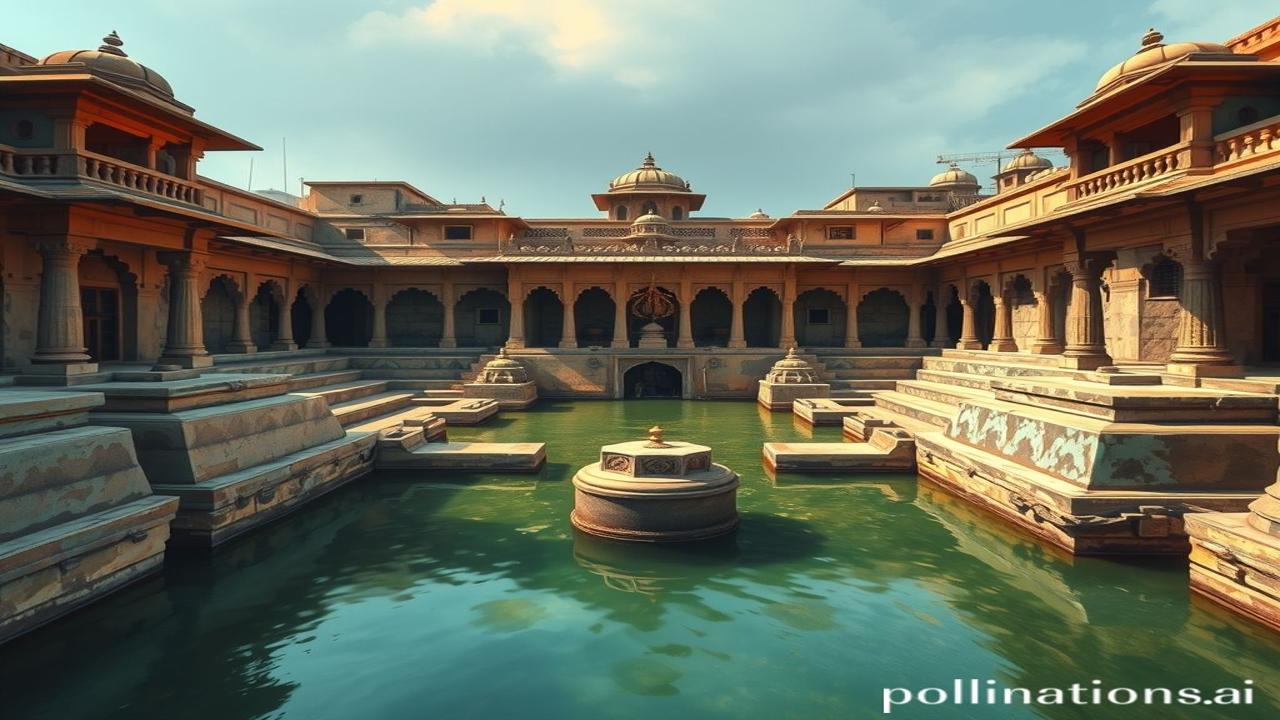पानी की कहानियाँ: Step Wells और Tanks – भारत की अनमोल विरासत
Kabhi socha hai, uss retili dhoop mein, jahan mirage jhoola karte hain, kuch aisi jagah bhi hain jo waqt ke saath beh nahi gayi? Jo humein hamari jadon se jodti hain, un maharajon ki kahaniyan sunati hain jinhone apni praja ke liye jivan ka amrit, yaani pani, sanrakshit kiya? Aaiye, aaj hum chalte hain unhi forgotten lanes mein, dekhte hain bharat ki jal-sthapatya (water architecture) ki shaan: Step Wells aur Tanks.
इतिहास की गहराई में: Step Wells और Tanks क्या हैं?
What exactly are these majestic structures? Step wells, yaani ‘baoli’ ya ‘vav’, aur tanks, ancient reservoirs, dono hi bharat ki intelligent water management techniques ke pratik hain. Ye sirf pani jama karne ki jagah nahi the, balki social hubs bhi the, jahan log milte-julte the, festival manate the, aur kuch baoliyan to mandir bhi thi.
When and where? Inka itihas Indus Valley Civilization (5000 saal pehle!) tak jata hai. Rajasthan, Gujarat, Delhi, Maharashtra – in states mein aapko inke kai adbhut udaharan mil jayenge. Step wells 6th century CE mein banane shuru hue, aur agle kai sau salon tak raja-maharaja inhe banwate rahe.
Importance? Think about it: ek drought-prone area mein, pani ek bohot valuable commodity tha. Step wells aur tanks pani ki availability ko ensure karte the, aur isliye communities ki survival ke liye crucial the. Ye ek tarah se prosperity aur stability ke symbols the.
ज़मीनी सच: लोग और जीवन
Imagine karna hoga Rajasthan ki ek chhoti si gaon ki life 500 saal pehle.
“Ma Rukmini ne aaj naye kapde pehne, kyunki baoli mein utsav tha,” ek bacchi apni maa se kehti hai. Baoli, gaon ki life ka center hai. Yahan auratein pani bharne aati hain, bachche khelte hain, aur budhe log peedhiyon ki kahaniyan sunate hain.
Raja Bhimdev ne apni rani, Udayamati ki yaad mein, ek shandar step well banwaya – Rani ki Vav. Artisans ne har eent par itni mehnat se kaam kiya, mano unki kala unke dil se nikal rahi ho. Har murti, har nakshi, ek kahani kehti hai – kahaniyon ke Bhagwan Vishnu ke das avtaron ki, kahaniyon ke raja-maharajaon ki.
Warrior, apni talwar chamkata hua, baoli ke kinare aaram karta hai. Woh jaanta hai ki pani hi uski shakti hai. Farmer, apni bailon ke saath, baoli se pani le jaata hai, apne khet ko sena ke liye. Dancer, apne ghungroo bandhkar, baoli ke stage par nritya karti hai, prakriti aur pani ko shukriya aada karti hai.
धरोहर और पहचान: Aaj ke zamane mein
Aaj bhi, step wells aur tanks hamein hamare itihas ki yaad dilate hain. Many have fallen into disrepair, but thankfully, efforts are underway to restore them and highlight their historical and architectural significance.
Festivals mein, village fairs mein, hum abhi bhi inke echoes sun sakte hain. Architecture mein, inki influence dikhai deti hai. They are a reminder of the ingenuity of our ancestors and the importance of water conservation. Step wells humari dharohar hain, humari pehchaan hain.
They are a reflection of Bharatiyata – our connection to nature, our respect for tradition, and our ability to create beauty even in the face of hardship.
मजेदार तथ्य या भ्रम-भंजक
Log samajhte hain ki step wells sirf Rajasthan mein hote hain… lekin asli sach yeh hai ki Madhya Pradesh, Karnataka, aur Tamil Nadu mein bhi kai shandar step wells hain.
Ek aur myth: Log sochte hain ki step wells sirf pani jama karne ke liye hote hain… par asliyat yeh hai ki kai baoliyon mein underground tunnels bhi hote the, jo unhe critical times mein bachne ke liye safe pathways provide karte the!
दृश्य और भावनाएं
Imagine karna hoga: Garmi ki dhoop. Ret ki smell. Baoli mein utarti hui thandi hawa. Mandir ki ghantiyon ki awaz. Auratein pani bharte hue gaana gaati hain. Bachche has rahe hain, pani mein chhapaak kar rahe hain. The cool stone feels soothing to the touch. That’s the essence of a step well. That’s the power of water architecture.
अंतिम विचार या उद्धरण
“Jal hi jeevan hai.” This simple saying, often repeated, holds profound truth. Step wells and tanks are not just architectural marvels; they are testament to our understanding of this truth, a physical embodiment of our dependence on water. They are a reminder that sustainability and respect for nature are not new concepts – they are deeply ingrained in our history and culture. Let’s learn from the past and work towards a future where water is valued and protected for generations to come.
